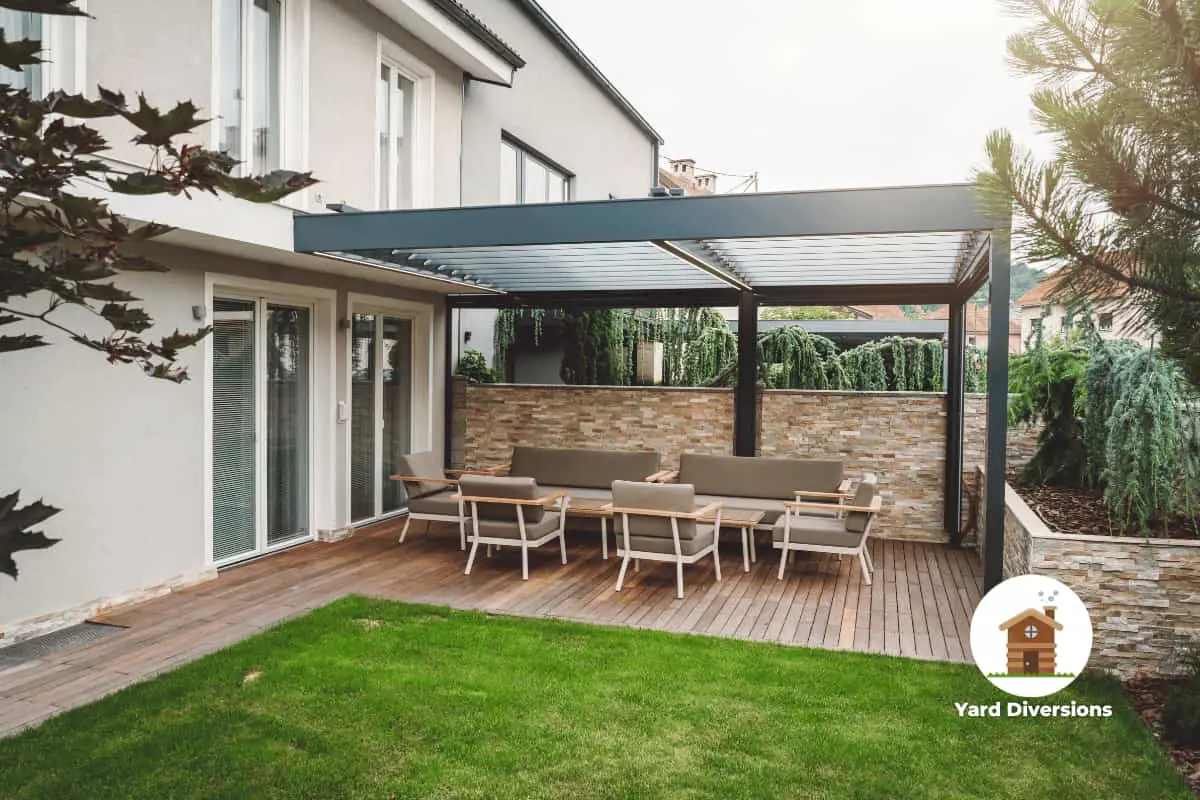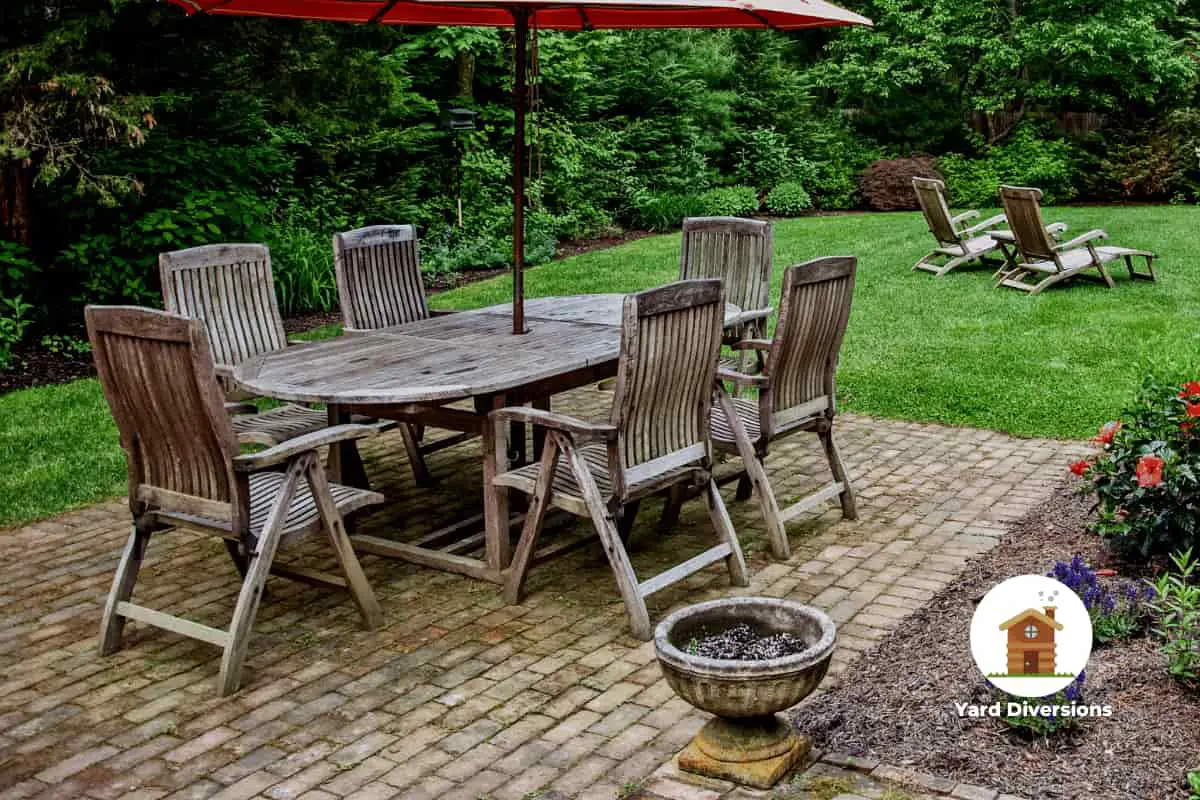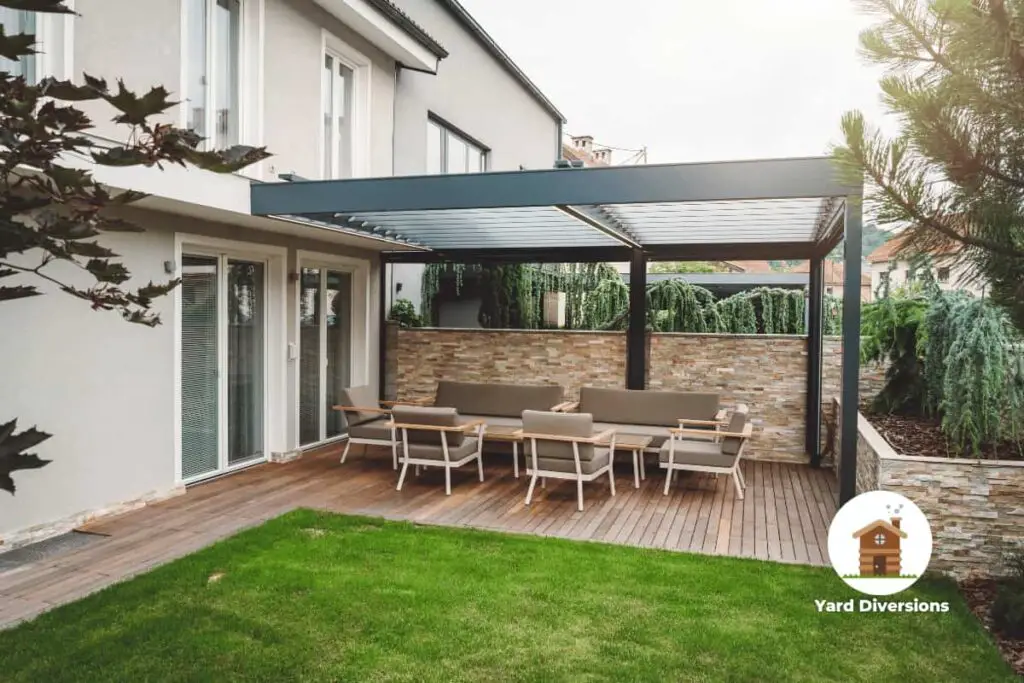There are numerous things to consider when building a patio. But one of the most essential elements is the angle of the slope. Without this, you won’t have adequate drainage.
So, should a patio be level or sloped?
For the best slop angle on a patio, aim for a fall of ¼ inch for every foot. This is roughly a two percent drop. However, it’s always best to check the appropriate state regulation before building commences. The maximum slope allowed is often a five percent drop.
If you are building a patio, it can be easy to overlook the importance of a slope. But if you get this element wrong, you could have puddles on your patio.
Keep reading to learn more about this simple angle and why it is essential.

What Is the Right Patio Slope?
Getting the proper patio slope is essential. To help you find the right amount of slope, here are some of the factors that you should take into account.
The Local Building Regulations
The first thing to do is think about the local regulations. There will often be a strict amount of slope that you need to add to your patio to ensure that it meets compliance.
If you are using a builder, they should understand these rules.
You might also have to follow an approval process before you can start building your patio.
This will involve sending plans to the local council. You might also have to abide by the rules set by your local homeowner’s association.
A failure to meet these regulations can be costly. Often, it will involve a financial penalty, like a fine. You might also be required to change the patio so it complies with the local rules.
Average Patio Slope
There are a few slopes that you can use for your patio. These are:
- ¼ inch fall for every foot
- Two to five percent fall away from the house.
There is an easy way to calculate how much your deck should fall. Simply calculate how many feet you want the deck to extend.
Then, divide the number by five. This tells you how many inches of fall you need.
For example, if you want your deck to be 10 feet long, you will need a fall of two inches to comply with regulations.
Based on this, if your patio is 10 feet away, the patio should slope down by two feet.
It should be noted, though, that the patio slope might change, depending on the type of materials you are using.
For example, if you are using stone paving, the individual stones might not be of even sizes. However, they will be sloped away from the house.
It should be noted that some people are concerned about the gradient. However, this doesn’t have to be a concern.
At a two-degree slope, it’s unlikely that you will be able to feel the effects. In fact, the slope is so slight that people might think that the patio is flat.
If you prefer, you can make the slope more drastic than that. Though, as we will discuss later, there is a limit to how much slope you can apply to the patio slope.
Direction Of The Patio Slope
You should also consider the direction that the patio is sloping. You will need to angle the slope away from the house.
There are a few ways you can do this:
- Uniform slope. In this case, the whole patio is sloping at the same angle. This ensures even water run-off.
- Corner slopes. Another option is to angle the slope into the corners of the patio slightly. This can give you more control over the water run-off.
What Is The Maximum Patio Slope?
While the average slope is two percent, there is also a maximum slope to consider.
Usually, the most amount of slope you are allowed to have is five percent. At this level, you will start to feel the slope in the ground.
Once the slope goes above eight percent, the problems will become more dramatic. This is the slope at which it becomes difficult for someone with a disability to propel themselves uphill unassisted.
Sometimes, they might even notice their chairs rolling down the patio. As you can imagine, this will cause serious concerns.

How To Ensure Your Patio Has The Right Slope?
If you are building a new patio, you must ensure it has the right slope. Here is how you can do this:
- Stake the ground. Hammer a stake into the ground where you want your patio to begin. Add a second at the distance where you want the patio to end.
- Tie a string line on the stake. This should be easy to adjust up and down to find the ideal angle.
- Determine the amount of slope. Remember that you should aim for a slope between two to five percent. This is roughly a quarter inch per foot. Once you have these measurements, mark them on the stakes and adjust the string line accordingly.
Should the Patio Be Level or Sloped?
Hopefully, you now have a better idea of how to get the proper slope for patios to let water away from the house. But this can make you ask why you must create a slope.
It will be easier to lay the patio level. However, this will lead to serious drainage problems.
The water won’t have anywhere to run to. As a result, it will collect on the concrete. Sometimes, this causes substantial problems.
The pooling of water can lead to moisture damage to the house. This can cause mold to take hold. Over time, mold can break down organic matter, like wood. Over the long term, this can lead to structural damage.
Water might even flow into your house. This can lead to significant damage and cost you hundreds of dollars in repairs.
How Does Patio Slope Affect the Process of Laying a Patio on Grass?
When laying patio on grass, the patio slope will impact the water drainage and overall stability. It’s essential to ensure the slope is accounted for during the installation process to prevent water pooling and potential damage to the patio surface. Proper grading and base preparation are crucial for a successful patio installation.
Final Thoughts
Something as minor as the angle of the slope on your patio can have huge ramifications in the long term. Because of this, it’s best to ensure that your patio complies with regulations so the water will drain quickly.


